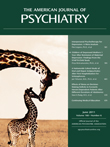Resting-State Functional Connectivity in Treatment-Resistant Depression
Abstract
Objective:
The authors used resting-state functional connectivity MRI to evaluate brain networks in patients with refractory and nonrefractory major depressive disorder.
Method:
In a cross-sectional study, 28 patients with refractory major depression, 32 patients with nonrefractory major depression, and 48 healthy comparison subjects underwent scanning using a gradient-echo echo-planar imaging sequence on a 3-T MR system. Thirteen regions of interest that have been identified in the literature as relevant to mood regulation were selected as seed areas. A reference time series was extracted for each seed and used for voxel-wise correlation analysis with the rest of the brain. Voxel-based comparisons of z-value maps among the three groups were performed using one-way analysis of variance followed by post hoc t tests with age and duration of illness as covariates of no interest.
Results:
Relative to healthy comparison subjects, both patient groups showed significantly reduced connectivity in prefrontal-limbic-thalamic areas bilaterally. However, the nonrefractory group showed a more distributed decrease in connectivity than the refractory group, especially in the anterior cingulate cortex and in the amygdala, hippocampus, and insula bilaterally; in contrast, the refractory group showed disrupted functional connectivity mainly in prefrontal areas and in thalamus areas bilaterally.
Conclusions:
Refractory depression is associated with disrupted functional connectivity mainly in thalamo-cortical circuits, while nonrefractory depression is associated with more distributed decreased connectivity in the limbic-striatal-pallidal-thalamic circuit. These results suggest that nonrefractory and refractory depression are characterized by distinct functional deficits in distributed brain networks.



